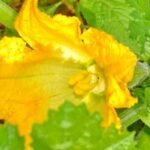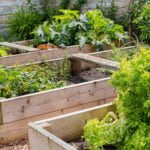Cocoa mulch, made from the hulls of cocoa beans, is a popular choice for gardeners looking to enrich their soil and enhance the aesthetics of their vegetable gardens. In this blog post, we will explore the benefits and potential drawbacks of using cocoa mulch in vegetable gardens, as well as best practices for its application. Additionally, alternative mulching options, considerations for different types of vegetables, and common misconceptions will be addressed to provide readers with comprehensive information on the topic.
Cocoa mulch is becoming increasingly popular among gardening enthusiasts due to its natural properties and ability to nourish the soil. However, it’s essential to consider whether it is suitable for vegetable gardens or if there are potential drawbacks that need to be taken into account. By thoroughly examining both the positive and negative aspects of cocoa mulch, readers can make informed decisions about its use in their own gardens.
Throughout this post, we will delve into the benefits of cocoa mulch in vegetable gardens, as well as provide insights into potential issues such as toxicity to pets and mold growth. Additionally, helpful tips for using cocoa mulch effectively in vegetable gardens will be shared to ensure that readers can maximize its benefits while minimizing any potential drawbacks.
Whether you are new to gardening or an experienced enthusiast, understanding how different types of vegetables respond to cocoa mulch and debunking common misconceptions surrounding its use is crucial for making informed decisions about your garden’s care.
Benefits of Cocoa Mulch
Cocoa mulch, made from cocoa bean shells, is a popular choice for gardeners due to its numerous benefits for vegetable gardens. Here are some of the key benefits of using cocoa mulch:
- Natural Properties: Cocoa mulch contains nutrients that can enrich the soil in vegetable gardens. As it breaks down, it releases nitrogen, potassium, and phosphorus, which are essential for plant growth.
- Weed Suppression: Cocoa mulch creates a natural barrier that helps suppress weed growth in vegetable gardens. This not only reduces the amount of time spent weeding but also helps conserve moisture in the soil.
- Aesthetic Appeal: In addition to its practical benefits, cocoa mulch adds a visually appealing touch to vegetable gardens. Its rich, dark color provides a striking contrast to the green foliage of many vegetables.
Using cocoa mulch in vegetable gardens can significantly enhance the growing environment for plants. However, it’s important to consider potential drawbacks as well as best practices for usage.
One consideration is whether cocoa mulch is safe for pets – it contains theobromine and caffeine, which can be toxic to dogs if ingested in large amounts. Additionally, because cocoa mulch retains moisture well, there is a risk of mold growth if it becomes excessively wet. It may also attract certain pests such as slugs and snails.
Despite these potential drawbacks, employing best practices can help mitigate concerns when using cocoa mulch in vegetable gardens.
Potential Drawbacks
While cocoa mulch is known for its benefits, there are potential drawbacks that gardeners should consider before using it in their vegetable gardens. It is important to weigh the positive aspects against the potential negatives to make an informed decision about whether cocoa mulch is the right choice for your garden.
Some potential drawbacks of using cocoa mulch in vegetable gardens include:
- Toxicity to Pets: One of the main concerns with cocoa mulch is its potential toxicity to pets. Cocoa bean hulls used to make the mulch contain theobromine, which is toxic to dogs if ingested in large quantities. Pet owners should exercise caution and consider alternative mulching options if they have pets that may come into contact with the mulch.
- Potential Mold Growth: Cocoa mulch, like other organic materials, has the potential to develop mold under certain conditions. Excessive moisture and poor air circulation can contribute to mold growth, which may be detrimental to plant health and create an unsightly appearance in the garden.
- Cost Considerations: While cocoa mulch offers numerous benefits, it can also be more expensive than other types of mulch. Gardeners on a budget may need to weigh the cost of using cocoa mulch against its benefits and potential drawbacks.
Considering these potential drawbacks can help gardeners make an informed decision about whether or not to use cocoa mulch in their vegetable gardens. By weighing these factors and taking precautions, such as ensuring proper ventilation and keeping pets away from the garden area, it is possible to use cocoa mulch effectively while minimizing any negative effects.
Best Practices for Using Cocoa Mulch in Vegetable Gardens
Proper Application
When using cocoa mulch in vegetable gardens, it is important to apply it correctly to maximize its benefits. Begin by preparing the soil and removing any weeds or debris from the garden bed. Then, spread a layer of cocoa mulch evenly around the base of your vegetable plants, taking care not to pile it up against the stems or stalks. This will help retain moisture, regulate soil temperature, and prevent weed growth, ultimately promoting healthier vegetables.
Monitoring Moisture Levels
Cocoa mulch is known for its ability to retain moisture in the soil, which can be beneficial for vegetable gardens. However, it is important to monitor the moisture levels regularly to ensure that the soil does not become overly saturated. Overwatering can lead to root rot and other issues for vegetable plants. By keeping an eye on the moisture levels and adjusting watering as needed, you can help maintain a healthy balance for your vegetables.
Protecting Pets and Wildlife
As mentioned in the potential drawbacks section, cocoa mulch contains substances that can be toxic to pets if ingested in large quantities. To mitigate this risk, consider creating barriers or using other deterrents to prevent pets or wildlife from coming into direct contact with the cocoa mulch in your vegetable garden. Additionally, providing alternative areas for pets to roam and ensuring secure fencing can help minimize any potential hazards associated with cocoa mulch.
By following these best practices for using cocoa mulch in vegetable gardens, you can enhance the health and productivity of your crops while minimizing potential drawbacks. With proper application techniques, monitoring moisture levels, and safeguarding pets and wildlife from potential risks, you can make the most of this natural mulching option for your vegetable garden.
Alternative Mulching Options
When it comes to mulching options for vegetable gardens, cocoa mulch is just one of many choices available to gardeners. While cocoa mulch offers several benefits, it is essential to explore alternative mulching options that may better suit your gardening needs.
Straw Mulch
One alternative option to cocoa mulch is straw mulch. Straw mulch is an affordable and lightweight option that provides excellent insulation for soil and helps retain moisture. It also breaks down gradually, adding organic matter to the soil as it decomposes. However, some drawbacks of straw mulch include its potential to harbor weed seeds and attract pests such as rodents.
Grass Clippings
Another alternative for vegetable garden mulching is using grass clippings. Grass clippings are readily available for most homeowners and provide a good source of nitrogen for the soil as they decompose. They also help improve soil structure and retain moisture. However, grass clippings should be used with caution, as they can form a dense mat that restricts air and water from reaching plant roots.
Wood Chips
Wood chips are another popular choice for mulching in vegetable gardens. They are long-lasting and break down slowly, adding organic matter to the soil over time. Wood chips also help suppress weeds and regulate soil temperature. However, fresh wood chips can temporarily deplete nitrogen in the soil as they decompose, so they should be used in moderation.
Exploring these alternative options allows gardeners to make informed decisions about the best mulching choice for their vegetable gardens based on their specific needs and preferences. While cocoa mulch offers its own unique benefits, considering these alternative options can provide valuable insight into finding the most suitable mulching material for your gardening endeavors.
Considerations for Different Vegetable Types
When considering whether cocoa mulch is good for vegetable gardens, it is essential to take into account the specific needs of different types of vegetables. Some vegetables may thrive with cocoa mulch, while others might not respond as favorably.
For example, root vegetables such as carrots and radishes typically prefer soil that is loose and well-aerated. Cocoa mulch can help maintain moisture and regulate soil temperature, which is beneficial for these types of vegetables. On the other hand, leafy greens like lettuce and spinach may be more susceptible to mold growth if cocoa mulch is used excessively or in damp conditions.
Another consideration for using cocoa mulch in vegetable gardens is the potential impact on fruit-bearing plants such as tomatoes and peppers. While cocoa mulch can provide a nutrient-rich environment for these plants, it is important to monitor the acidity levels of the soil, as cocoa mulch can slightly increase acidity over time.
Overall, different vegetables have unique requirements, making it crucial to assess their individual needs when deciding whether or not to use cocoa mulch in the garden.
| Veggie Type | Considerations for Cocoa Mulch |
|---|---|
| Root Vegetables (Carrots, Radishes) | Loose soil preferences benefit from cocoa mulch’s moisture retention properties. |
| Leafy Greens (Lettuce, Spinach) | May be susceptible to mold if used excessively or in damp conditions. |
| Fruit-Bearing Plants (Tomatoes, Peppers) | Cocoa mulch can provide a nutrient-rich environment but monitor acidity levels. |
Addressing Common Misconceptions
There are several misconceptions surrounding the use of cocoa mulch in vegetable gardens. One common misconception is that cocoa mulch is toxic to plants, which is not the case. In fact, cocoa mulch naturally contains nutrients that can benefit vegetable plants in the garden. However, it is important to use it in moderation and follow recommended best practices for application.
Another misconception is that cocoa mulch is harmful to pets. While it is true that cocoa mulch contains theobromine, which is toxic to dogs if ingested in large quantities, when used properly and kept away from pets, it should not pose a significant risk. Additionally, there are pet-safe alternatives available for those concerned about this issue.
Finally, some people believe that cocoa mulch promotes mold growth in vegetable gardens. While it is true that any type of organic material has the potential to develop mold under certain conditions, proper ventilation and regular maintenance can help prevent this issue.
| Misconception | Fact |
|---|---|
| Cocoa mulch is toxic to plants | Cocoa mulch naturally contains nutrients that can benefit vegetable plants. |
| Cocoa mulch is harmful to pets | Cocoa mulch can be harmful if ingested by pets, but using it properly and keeping it away from pets can mitigate this risk. |
| Cocoa mulch promotes mold growth | Proper ventilation and regular maintenance can help prevent mold growth when using cocoa mulch. |
Conclusion
In conclusion, cocoa mulch can be a beneficial addition to vegetable gardens, providing natural enriching properties to the soil and helping to suppress weeds. However, it is important for gardeners to be aware of potential drawbacks, such as its toxicity to pets and the possibility of mold growth. By following best practices for using cocoa mulch and considering alternative mulching options, gardeners can make informed decisions about whether it is the right choice for their specific gardening needs.
It is essential to consider different vegetable types when using cocoa mulch, as some may respond better than others. Additionally, addressing common misconceptions about cocoa mulch can help readers make more informed choices for their own gardens. Overall, while cocoa mulch has its benefits, it is important for gardeners to weigh these against potential drawbacks and consider alternative options before making a decision.
Ultimately, the decision of whether or not to use cocoa mulch in a vegetable garden depends on various factors such as the specific needs of the garden, including the types of vegetables being grown, and the presence of pets. By being well-informed about the benefits and potential drawbacks of cocoa mulch, readers can make educated decisions that will contribute to successful and thriving vegetable gardens.
Frequently Asked Questions
What Are the Disadvantages of Cocoa Beans Mulch?
Cocoa beans mulch can have some disadvantages, such as being toxic to animals if ingested in large amounts. It also has a strong chocolate scent, which might be unpleasant for some people.
What Are the Benefits of Cocoa Mulch?
There are several benefits of using cocoa mulch in the garden. It is an attractive option for landscaping, as it looks similar to soil when spread out. It also serves as a natural weed barrier and can help retain moisture in the soil.
Is Cocoa Mulch Acidic?
Cocoa mulch is slightly acidic, which means it can be beneficial for plants that thrive in acidic soil conditions. However, it’s important to monitor the pH levels of the soil when using cocoa mulch to ensure it doesn’t become too acidic for certain plants to thrive.

If you’re looking to get into vegetable gardening, or are just looking for some tips on how to make your current garden better, then you’ve come to the right place! My name is Ethel and I have been gardening for years. In this blog, I’m going to share with you some of my best tips on how to create a successful vegetable garden.





